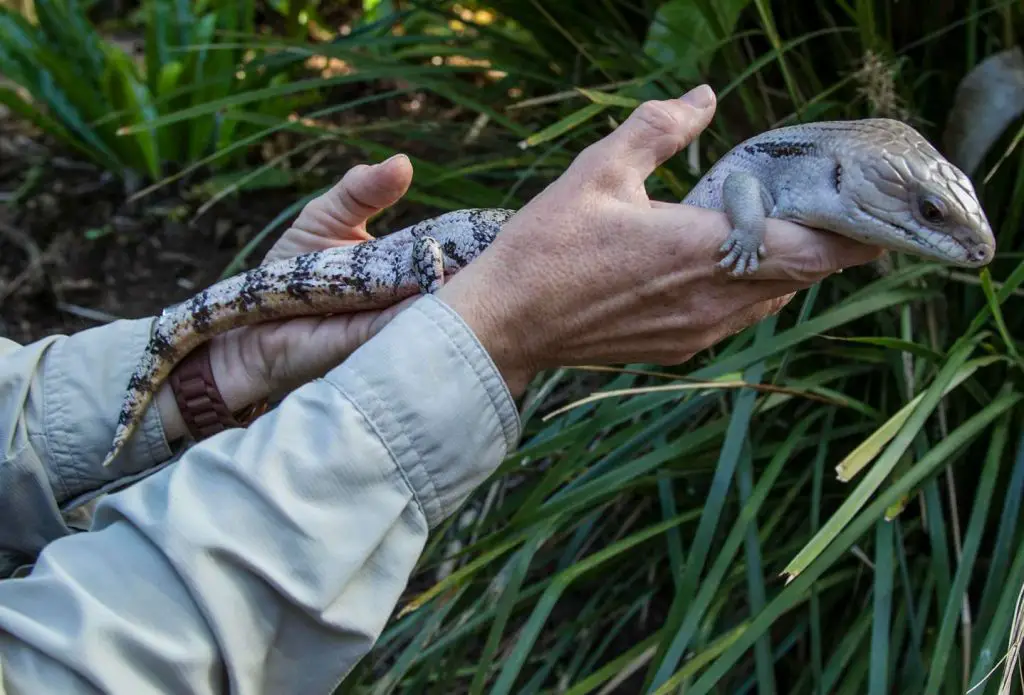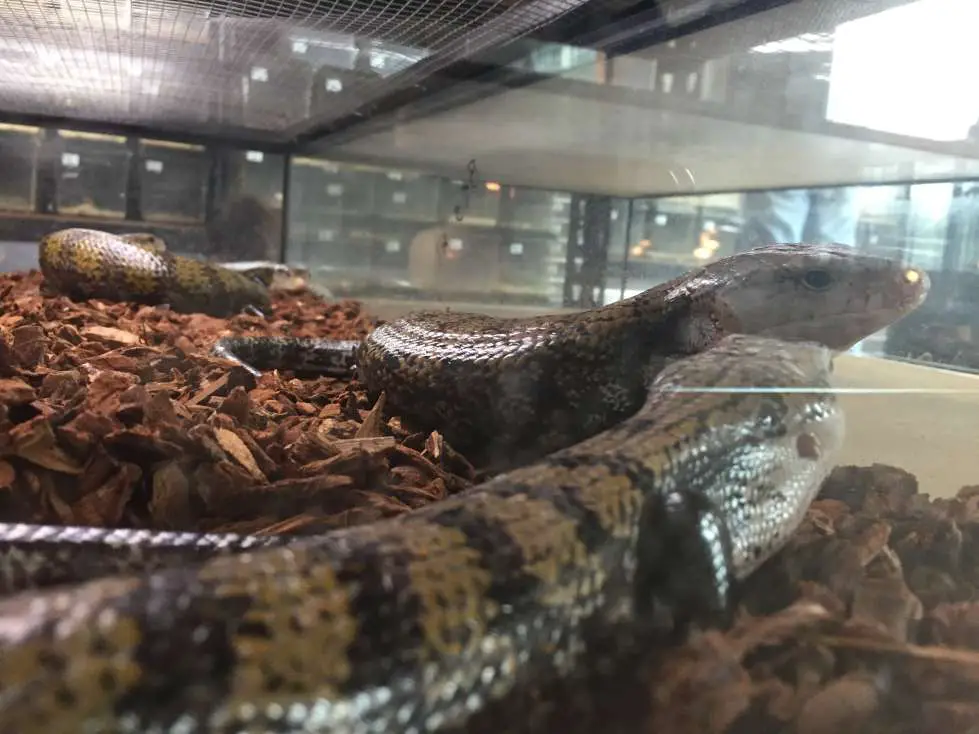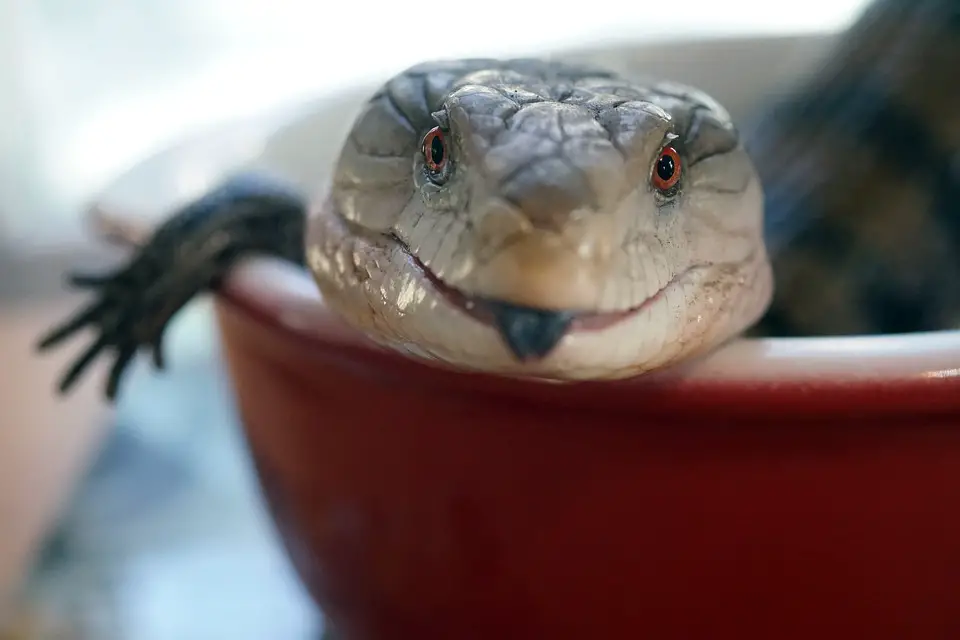Why blue tongue skinks make good pets? Do they suit for children?
In this article, we will give you 12 indisputable reasons why blue tongues skinks make good pets.
Contents
- Do Blue Tongue Skinks Make Good Pets?
- 12 Reasons That Make Blue Tongue Skinks Great Pet
- They are easy to handle
- Blue Tongue skinks are hardy in captivity
- They have a long life span.
- They have a beautiful long blue tongue
- They are inexpensive to maintain
- Blue tongue skinks are sizable.
- There are many species to choose from
- They are smart
- They only have a common health problem.
- They are always available
- They are suitable for children and beginners
- Blue tongue skinks behaviour
- Bonus Tip: Tip to Tame a Blue Tongue Skink for Children
- Conclusion
Do Blue Tongue Skinks Make Good Pets?
Blue tongue skinks are plentiful, and they have a big appetite for slugs, snails, and other insects. Thus, they are easy to handle, care, and maintain. Also, they are friendly and tamable.
Blue tongue skinks are naturally docile. However, if they feel threatened, they can bite. But, their bite is not fatal as they are not poisonous. If you tame them well, they become friendly and easy to handle.
For these and more reasons, blue tongue skinks can make good pets for beginners and people with children.
12 Reasons That Make Blue Tongue Skinks Great Pet
There are many reasons why you should keep blue tongue skinks. Keep reading to see why those reasons are indisputable.
They are easy to handle

Most reptiles don’t like to be handled. But for blue tongue skinks, they tolerate handling. Also, they are personable, and you can say they enjoy a little scratch on their head and chin.
Blue tongue skinks enjoy the attention. Thus, you can handle them for long without them complaining. However, before handling blue tongue skinks, you should tame them as they can be irritable.
At first, they tend to be defensive. But, after excellent taming, blue tongue skinks become more friendly. For secure handling and taming, it would be best if you purchase a blue tongue skink that is used to captivity. Wild-caught blue tongue skinks are challenging to tame and handle.
New to blue tongue skink? Check out the blue tongue skink care sheet now! We had listed out all the things you need to know about blue tongue skinks as pets. Check it now!
Blue Tongue skinks are hardy in captivity

Blue tongue skinks are more natural to raise and maintain compared to other reptiles. They feed on a variety of food, and their food is almost readily available.
Ideally, blue tongue skinks can feed on most food that humans consume. Thus, feeding them is inexpensive. For example, blue tongue skinks can feast on chicken, pork, beef, and any other meat that humans can consume.
Also, they can feed on most vegetables and fruits that humans consume. Some of the fruits that you can offer to your blue tongue skinks are apples, mangoes, bananas, cherries, guavas, and more.
Additionally, they can survive well without live food. Instead, you can offer blue tongue skinks dog or cat food if it’s an available or human protein-rich food. Adult blue tongue skinks require 50% proteins, 40% vegetables, and 10% fruits.
They have a long life span.
Blue tongue skinks can live 15-20 years in captivity if you feed and care for them well. In captivity, blue tongue skinks tend to live longer than in the wild.
Pet owners love to keep animals that have a long lifespan. It is because they would like to live with their pet long enough. They are emotionally attached to their pets. Thus, if a pet will only live for a few years and die, they leave them heartbroken and sad.
Some blue tongue skinks species have lived up to 30 years in captivity. Thus, they can make great pets.
They have a beautiful long blue tongue

Just as their name suggests, blue tongue skinks have a long blue tongue. They stick out their tongue to scare off their predators.
Besides scaring off the predators, their blue tongue is the unique feature that makes them different from other skinks. Watching them feed is fun and exciting.
Besides, they are rare skinks that you can only find in Australia and North Indonesia. For this reason, it is great to have them as pets.
They are inexpensive to maintain
Did you know that it is cheaper to maintain a blue tongue skink than it is a dog? To keep and maintain blue tongue skink, you will only require:-
- Tank
You will require a small tank that is approximately 55 gallons. Blue tongue skinks are better kept separate as they can be aggressive among themselves. They are also not good climbers, and hence that tank should be long enough for them to move around.
- Substrate
You can use cypress mulch, aspen shavings or newspapers for substrates. These materials are not hard to get, and thus they are cheap.
- Lighting
UVB lighting is critical for blue tongue skink; however, getting one is not expensive. A regular UVB lighting will cost approximately $10 on amazon.
- Heating
Heating is also essential for a blue tongue skink. They require a heat of 850F – 950F. You can also include an under heat element for your blue tongue skinks.
The cost of maintaining an adult blue tongue skink is quite low as you only feed them twice per week.
Blue tongue skinks are sizable.
Blue tongue skinks have short legs and a stubby tail. And, they do not like to climb much.
Even though the size of a blue tongue depends on species, their average size is 20 inches.
New to blue tongue skink? Check out the blue tongue skink care sheet now! We had listed out all the things you need to know about blue tongue skinks as pets. Check it now!
However, some species like Northern blue tongue skinks are massive and can grow up to 24 inches. Also, pygmy skinks, on the other hand, they are small and can only grow to a maximum length of 4 inches. Thus, blue tongue skinks are sizable and are fun to handle.
There are many species to choose from
There are plenty of species in the blue tongue skinks family. However, not all species make great pets. Thus, it is good to do your research before choosing the best species to keep.
The species vary from colours and even body size. Some of the best species that make good pets are:
- Northern blue tongue skink
- Eastern blue tongue skinks
- New Guinea blue tongue skinks, and
- Blotched blue tongue skinks.
Many blue tongue skinks come from New Guinea, others are collected from the wild in Australia, and others domestically breed in the United States.
They are smart
Blue tongue skinks are smart and learn fast. According to Australian research, young skinks are as intelligent as their adult counterparts.
At birth, baby blue tongue skinks can feed and protect themselves from their predators. To establish how smart baby blue tongue skinks are, a group of researchers had to conduct a test.
The test included a dozen adult blue tongue skinks and 16 captive-born juveniles who were between 23 and 56 days old. In all the tests, the young blue tongue skinks performed as good as the adults.
They only have a common health problem.
However, if you feed your blue tongue skink well, it is improbable to face this problem.
Thus, to ensure that your blue tongue skink is free from metabolic bone disease, you should include mineral supplements in its diet.
Metabolic disease in blue tongue skink occurs when there is an imbalance of calcium to phosphorus ratio in their diet. When phosphorus is more than calcium, you should add calcium supplements in their diet.
They are always available
It is not hard to get available blue tongue skinks in the market. Also, many online pets stores can deliver pets to your home. However, you must ensure that you get your pet from a reputable breeder.
Also, you should ensure that there’s an available reptile pet veterinarian in your area. Again, it’s good to check pet regulations in your area to avoid legal issues.
Healthy blue tongue skinks should have a healthy appetite, bright eyes, and have no blemishes. Therefore, before purchasing a blue tongue skink, you should watch it eat, and check their eyes and body.
They are suitable for children and beginners
For beginners and pets for children, blue tongue skinks make great pets. They are easy to care for, and you don’t need a lot of experience to handle them.
Beginners can easily care for them with the help of a beginner’s care sheet for blue tongue skinks. Also, the pets are handleable and thus ideal for children.
If you get blue tongue skinks from captivity, it will only take two weeks or more before you can handle them. They can easily be tamed, and you don’t need to feed them regularly. Therefore, they can also make good pets for people with a tight schedule.
Blue tongue skinks behaviour
Blue tongue skinks are docile, gentle, quiet, and easy to tame. Thus, concerning their behavior, they are the best pets for children and beginners.
Even so, if you want to get a pet for your children, you should tame it well enough before letting children handle them. It is because, blue tongue skinks even though they are not aggressive, they are likely to bite.
A blue tongue skink bite is not poisonous, but it’s painful. Therefore, you should only let children handle them if they are well tamed.
Bonus Tip: Tip to Tame a Blue Tongue Skink for Children
Blue tongue skinks are likely to keep hiding during the first two weeks after introducing them to a new home.
During those two weeks, you should not disturb them. You should let them settle down and get used to their environment.
After two weeks, you can now introduce your children to the blue tongue skinks. At this stage, they should not handle the blue tongue skink yet, but they should regularly talk and offer him treats.
After the third week, they can now try to handle him. But, don’t let the children hold the blue tongue skinks alone and have them wear welding gloves. Blue tongue skinks can bite, and thus you should try to handle him first.
When you are sure that the blue tongue skink is fully tamed and is no longer trying to be defensive, you can now let the children handle him.
Conclusion
Blue tongue skinks are gaining popularity in the reptile wild. They have a great personality, and they are calm and friendly. Thus, if you want a pet that enjoys attention and can be emotionally attached to humans, blue tongue skinks are great pets.
